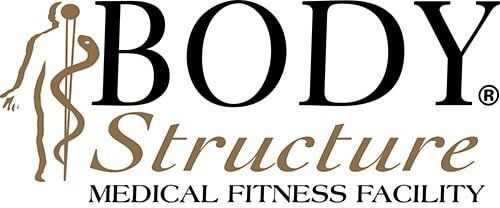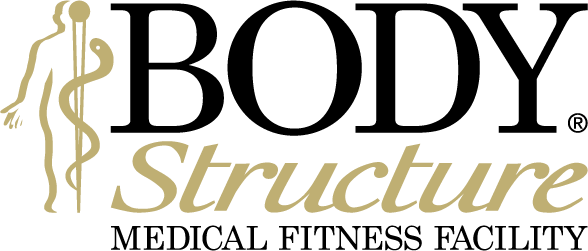Top 10 Fitness Myths You Need to Stop Believing – And What to Do Instead
Body Structure Medical Fitness, Physical Therapy, and Personal Training

After diving into Kelly Starrett’s The Supple Leopard, I realized just how much misinformation is out there when it comes to fitness. The book opened my eyes to the importance of functional movement, mobility, and proper mechanics—things that are often overlooked or misunderstood in mainstream fitness advice.
The truth is, bad advice can keep you stuck, lead to injury, and leave you feeling frustrated with your progress. But once you understand how your body is meant to move and what really works, everything changes. So today, I’m breaking down 10 common fitness myths that are holding you back and showing you what to do instead—based on what I’ve learned from my own experience and from experts like Starrett.
Myth #1: Lifting Weights Will Make You Bulky
Fact: Lifting weights won’t turn you into the Hulk. In fact, it’s one of the best ways to build lean muscle, burn fat, and increase your metabolic rate. Unless you’re consuming massive amounts of calories and training specifically for hypertrophy, bulking up takes way more effort than most people think—especially for women, who don’t have the testosterone levels to naturally gain large amounts of muscle. Strength training is your best friend for getting strong, mobile, and lean.
What to Do Instead: Don’t fear the weights. Incorporate compound lifts like squats, deadlifts, and presses to build functional strength and improve body composition.
Myth #2: No Pain, No Gain
Fact: Pain is a sign that something’s wrong. Sure, training can be uncomfortable at times—hard work should challenge you—but pain that feels sharp or debilitating? That’s not growth, that’s damage. This mentality is a fast track to injury. Smart training is about building capacity and mechanics, not breaking your body down.
What to Do Instead: Train with intent. Focus on technique, mobility, and progressive overload. You should feel challenged but in control. Pain shouldn’t be part of the equation.
Myth #3: Crunches Will Give You Six-Pack Abs
Fact: Here’s the truth: abs are made in the kitchen, not the gym. Crunches alone won’t get you shredded. Spot reduction is a myth—you can’t target fat loss in one specific area of your body. To reveal those abs, you need to lower your overall body fat percentage through a combination of strength training, cardio, and nutrition.
What to Do Instead: Prioritize full-body movements like deadlifts, kettlebell swings, and squats, which engage your core while burning more calories. Combine that with a diet that’s high in protein and balanced in carbs and fats for real results.
Myth #4: Cardio is the Best Way to Lose Weight
Fact: Cardio has its place, but it’s not the golden ticket to fat loss. The more muscle you build, the more calories your body burns—even at rest. Strength training not only builds lean muscle but also boosts your metabolism, making fat loss more efficient over the long term. Endless hours on the treadmill won’t give you the same effect.
What to Do Instead: Lift weights, prioritize compound movements, and throw in some HIIT (High-Intensity Interval Training) if you want to boost your cardiovascular fitness and shred fat.
Myth #5: Stretching Before a Workout Prevents Injury
Fact: Static stretching before a workout can actually inhibit your performance. It doesn't "warm up" your muscles or prime your nervous system for movement. Dynamic warm-ups, on the other hand, prep your body by moving your muscles and joints through full ranges of motion, mimicking the exercises you're about to perform.
What to Do Instead: Incorporate dynamic movements like lunges, squats, arm circles, or banded exercises to get your body ready for action. Save static stretching for after your workout to help improve flexibility.
Myth #6: Lifting Heavy Will Ruin Your Joints
Fact: Lifting heavy weights with proper form doesn’t destroy your joints—it strengthens them. When done correctly, resistance training builds the muscles around your joints, creating better stability and reducing injury risk. What actually ruins your joints is poor movement mechanics, a lack of mobility, and overuse without proper recovery.
What to Do Instead: Focus on mastering form and increasing mobility. Prioritize quality over quantity. Strengthening your muscles, tendons, and ligaments around your joints will protect them in the long run.
Myth #7: Sweating More Means You’re Burning More Calories
Fact: Sweat is not an indicator of how hard you’re working or how many calories you’re burning. Sweat is your body’s way of cooling down, and how much you sweat depends on a lot of factors, including temperature, humidity, and genetics. You can burn just as many calories in a strength training session where you barely break a sweat as you can in a high-intensity cardio workout.
What to Do Instead: Don’t chase the sweat. Chase intensity, good form, and progression. Keep track of your workouts with measurable metrics like reps, weight lifted, and time under tension to ensure you’re making progress.
Myth #8: You Shouldn’t Lift If You’re Sore
Fact: There’s a difference between being sore and being injured. Muscle soreness is a natural part of the recovery process and doesn’t necessarily mean you need to skip your workout. In fact, light movement can help alleviate soreness by increasing blood flow to the muscles. However, you should be careful to listen to your body—if you feel sharp pain or something doesn’t feel right, rest.
What to Do Instead: Incorporate active recovery, like walking, light mobility work, or even yoga, on days when you’re sore. Keep moving, but don’t push through sharp or intense pain.
Myth #9: The More Reps, the Better
Fact: More isn’t always better. Quality reps always beat out quantity. Sloppy form with high reps just sets you up for injury and won’t give you the results you’re looking for. When it comes to strength training, focus on proper technique and working through the full range of motion with control. The last thing you want is to rush through movements without giving your muscles time under tension.
What to Do Instead: Prioritize slow, controlled reps with proper form. Increase weight progressively, but never sacrifice mechanics for more reps.
Myth #10: You Need to Work Out Every Day
Fact: More isn’t always better—recovery is where the magic happens. Training every day without giving your body time to recover can lead to burnout, injury, and overtraining syndrome. Your body needs time to rebuild and repair. The key is to balance intense workouts with adequate rest and recovery to make consistent progress.
What to Do Instead: Train hard, but recover harder. Incorporate rest days, mobility work, and proper sleep into your routine. The goal is sustainable, long-term gains—not quick burnout.
The fitness world is filled with myths that keep people from reaching their true potential. It’s time to ditch the old-school thinking and focus on what really works. Smart training is about movement quality, recovery, and consistency—it's not about grinding yourself into the ground.
Ready to take your fitness to the next level? Let us guide you with a personalized training plan that builds strength, mobility, and long-term health. Book your free consultation today, and let's bust these myths together!






















